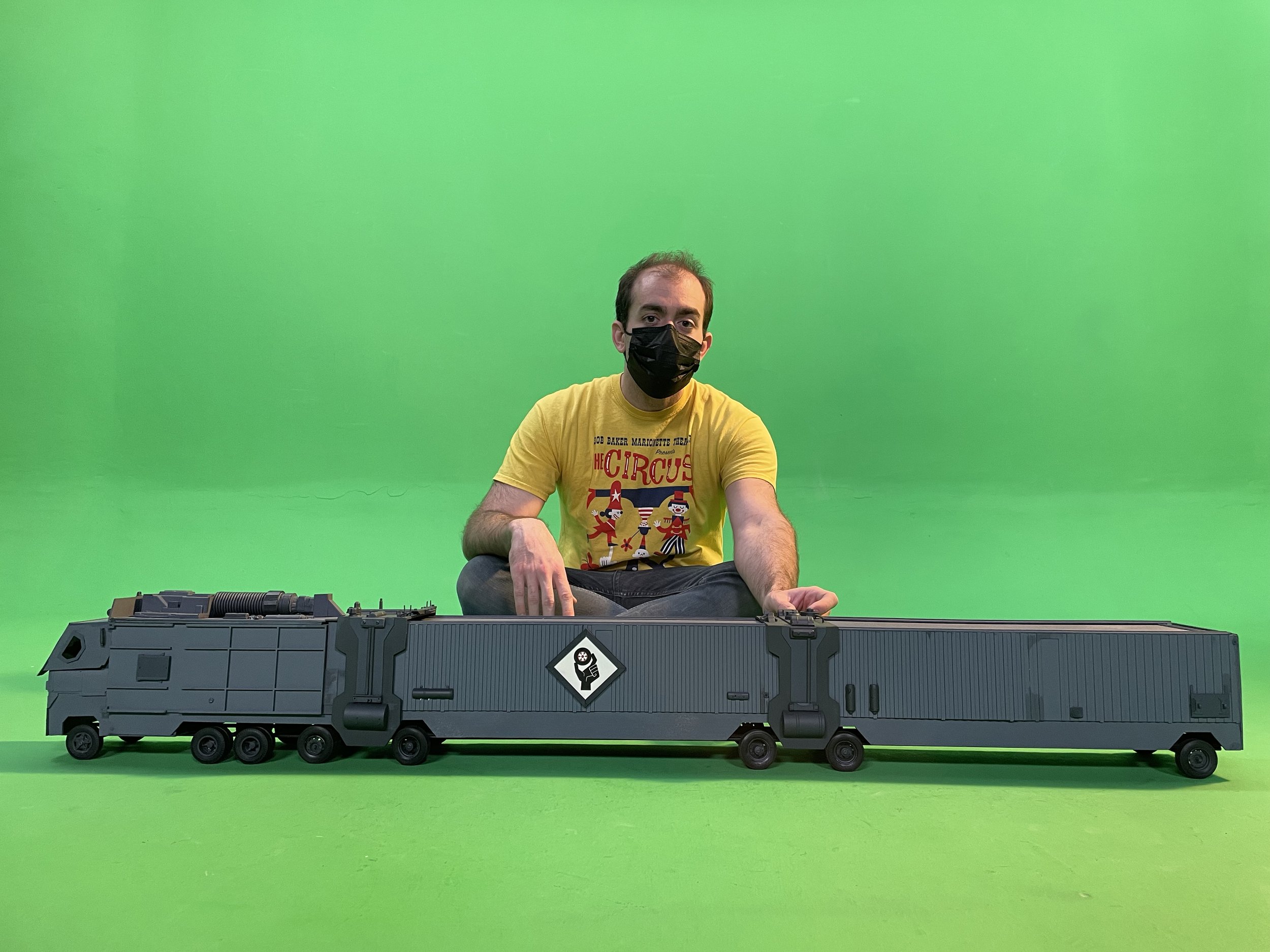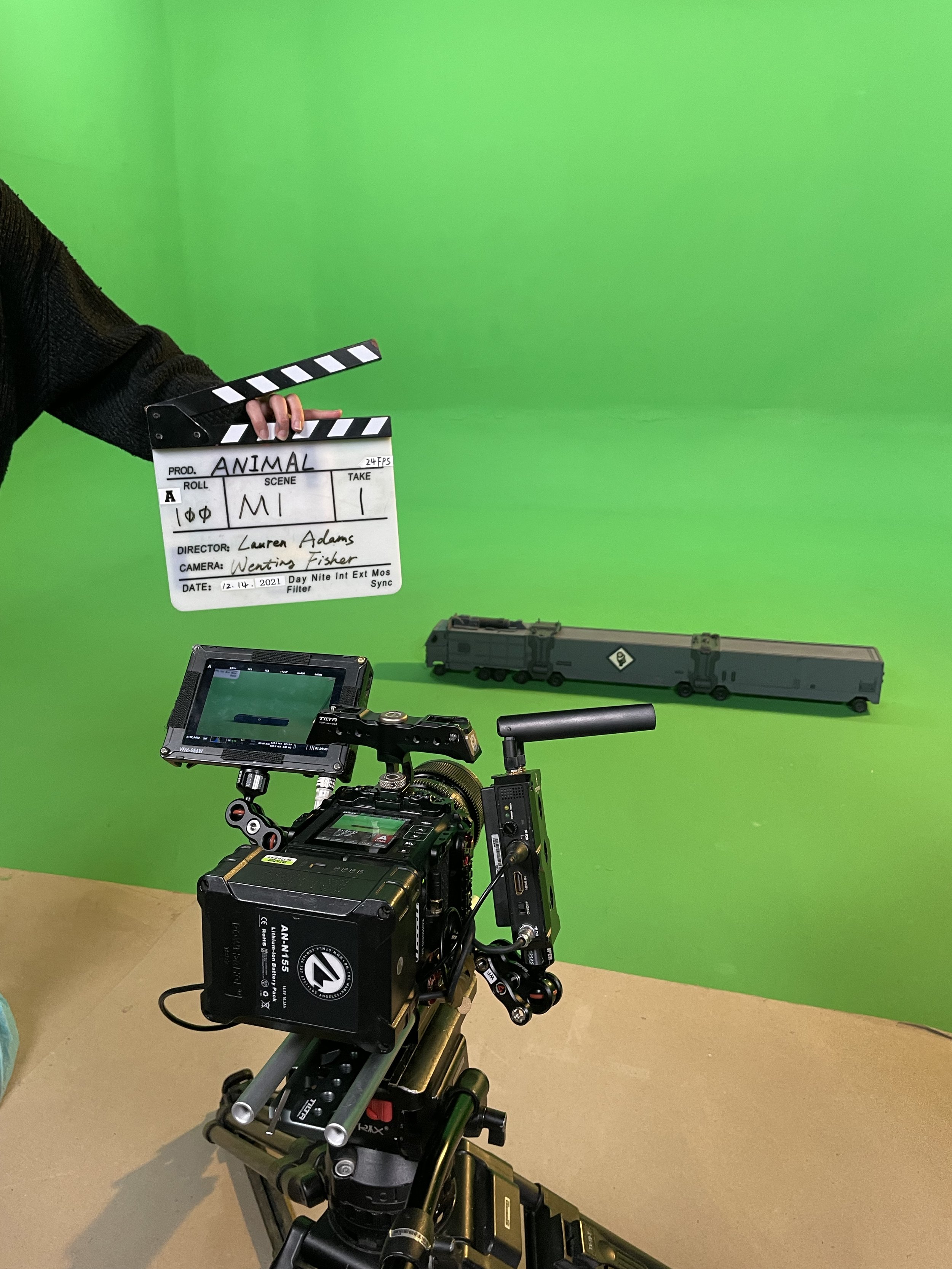I hadn’t fully comprehended the size of my latest miniature, a five-and-a-half-foot long “land train,” until I sat down behind it for a photoshoot at Dreaming Tree studio in Burbank, my friend Kate from The Daily Mini behind the camera. Transporting it to set on the morning of December 12th, each plastic squeak as it rattled in the back of my Nissan Versa hatchback stirred up memories of cradling school projects, dioramas, in back of my mother’s car, worried that they’d fall apart at the slightest bump in the road. But we made it, all 65 inches of this dystopian sci-fi semi truck painted in battleship grey for the upcoming sci-fi black comedy Animal, directed by Lauren Adams.
Set against the canvas of a collapsed, alternate history America, the film's characters pilot a massive self-driving, windowless ship for the monolithic company "PostHaste." We follow these two women as they cargo tons of freight across a desolate expanse of abandoned cities as they deliver supplies for an ongoing and ambiguous rebuild of the country. Or, so says the company. The ship was modeled from a floor plan of the life-size interior set built for the actors, which was then scaled down to 1:24 to maintain its proportions. I was inspired by the unsympathetic nature of PostHaste and its complete lack of regard for the human pilots' safety in piloting their ship. You may see there are no safety measures on the vehicle: No guard rails or warning labels that you might ordinarily see on massive industrial equipment to protect the manufacturer against litigation from personal injury. In this dystopian future, the ship represents (even from a color standpoint) this massive, grey unsympathetic force that plows through anything, even people, to make more money. The size and heft of this miniature is a pointed commentary on that theme in the script: Packages must be delivered, no matter what the human cost.
The crew of the miniature unit shoot on Animal (from left to right): Miniaturist Sean David Christensen, miniature unit cinematographer Wenting Deng Fisher, director Lauren Adams, set decorator/set PA Manon Crespin & co-writer/producer, Jeff Roberts.
The cockpit of the miniature is a partly deconstructed model kit of two semi trucks designed by AMT Models. These were used to match the life-sized interior of the ship, shot on a soundstage months prior. The other materials I used were wet media board, basswood, wooden dowels and bits of recycled plastic to "bulk out" the form. I handcrafted the shape of the front windshield and side windows to match the life-sized film set, so the edit would be as seamless as possible between the miniature and the actors inside the ship. For the windshield, I used a piece of lighting gel (ND filter) to simulate a tinted window. I didn't want the audience to be able to look inside. There's something sinister about not being able to see what's going on behind the “steel curtain” of this imposing vessel. The completed ship is just over five feet long when fully connected, made up of a cockpit living quarters section and two shipping containers joined together by "mechanical joints" made of basswood. These joints mask the seams in between each car, and create an illusion of this ship being one continuous machine, a force of industrial brutality.






